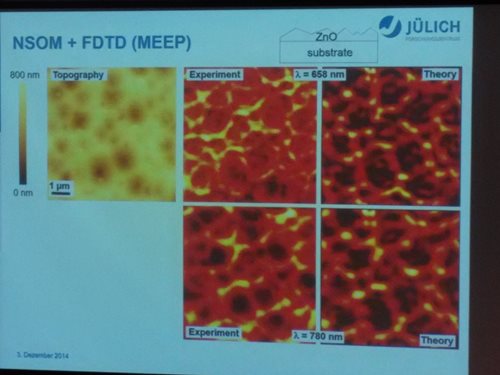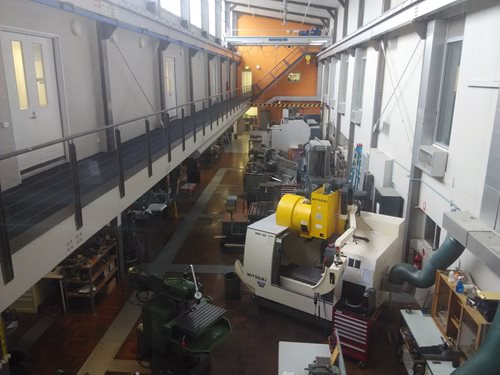Highlights for Day Two: Light, Energy and Environment Congress
Highlights for Day Two: Light, Energy and Environment Congress
Baohua Jia
On the second day of the Congress, a number of talks attracted my attention. I would like to share some of them.
Impact of disorder on solar cell performance
In a talk given by Ulrich W. Paetzold and co-workers from the Institute of Energy and Climate Research (IEK-5)-Photovoltaics, Forschungszentrum Julich GmbH, Germany, disorder in nanophotonic thin-film solar cells was examined by near-field scanning optical microscope (NSOM). The authors found that disorders in nanoscale grating structures can improve the light management effect for a broad range of angles of incidence. It was a very interesting approach to use NSOM to closely look into the light interaction with the nanostructures, in particular some local mode distributions. However, it should be cautious to conclude that disorder benefits the solar cells performance because a fair comparing system between ordered or disordered system is challenging to build up, as suggested by the authors.

Image: Slide from Ulrich W. Paetzold on the NSOM measurement of thin film solar cell
Bio-inspired nanostructure for organic optoelectronic devices
In another invited talk today, Professor J. X. Tang and co-workers from Soochow University, China reported a universal method of optical manipulation of light in high-efficiency organic light-emitting diodes and organic solar cells by integrating a bio-inspired moth’s eye nanostructure with broadband anti-reflective and quasi-omnidirectional properties. The bio-inspired nanostructures were realized by soft nanoimprint lithography, which offers great advantage in its manufacturing compatibility for high-throughput large-area and low-cost organic optoelectronic devices.
In the afternoon we had a very productive visit to the Department of Electronic Materials Engineering, Australian National University. Professor Lan Fu kindly show us the lab. I was amazed at the world-class facilities at the Australian National University and the Australian National Fabrication Facility (ANFF), in particular the dedicated technician team at the mechanical workshop (shown in the photo below), which is absolutely impressive and very useful.

Image: Mechanical workshop in Australian National University
There were several interesting presentations at the poster session. My colleague Mr. Yinan Zhang presented his work on nanoparticle light trapping in ultrathin silicon wafer solar cells. Using nanoparticle integrated ultra-thin solar cells with only 3% of the current wafer thickness can potentially achieve 15.3% efficiency combining the absorption enhancement with the benefit of thinner wafer induced open circuit voltage increase. This represents a 97% material saving with only 15% relative efficiency loss.
In another presentation, Ms. Xiao Fu presented some high resolution photocurrent imaging of nanoparticle integrated silicon thin film solar cells. By illuminating the solar cell at different wavelengths with a scanning confocal microscope and collecting the photocurrent simultaneously, the light trapping behaviour for the solar cells can be imaged.
It is really exciting to see that some conventional very powerful optical tools start to play a role in the characterisation and understanding of the light interaction with solar cells.
I enjoyed very much the poster session and the delicious food…
